98pc textbooks sent to upazilas
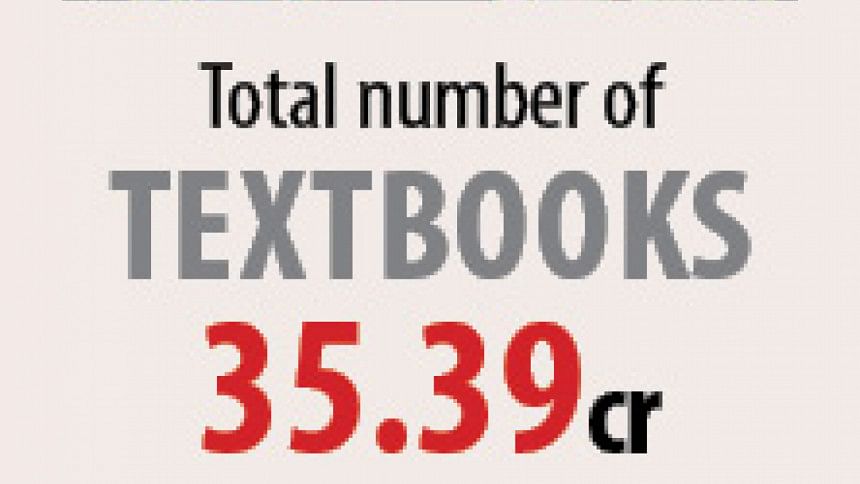
Almost all the new textbooks have reached upazilas and the process has begun to send those to schools for distribution among students on January 1.
For the last one decade, the government has been making sure that schoolchildren across the country begin their New Year with the uplifting smell of freshly printed textbooks.
It is always a daunting task to print over 35 crore textbooks for different subjects and send those to more than 1.25 lakh institutions almost at the same time.
But the authorities have met the challenge with flying colours, enabling the country to see almost 100 percent enrolment at primary and a significant rise in enrolment at secondary level.
The success also led to decrease in the dropout rate significantly at both the levels, say officials of National Curriculum and Textbook Board.
Well-designed textbooks in required number is one of the effective ways to improve classroom instructions and learning outcomes, they added.
As of yesterday, said NCTB Controller of Distribution Prof Ziaul Haque, 98 percent of textbooks for the academic year 2020 have reached the upazilas.
The government is set to distribute 35,39,14,197 copies of textbooks among 4,27,52,198 students on the first day of 2020.
Since 2010, it has distributed 296 crore copies among 43.19 students.
“Bangladesh has set a rare example in the world through distribution of free textbooks among such a large number of students on the first day of January,” NCTB Chairman Prof Narayan Chandra Saha told The Daily Star on Thursday.
NCTB prints and distributes textbooks for pre-primary, primary, secondary levels in schools, ebtedayee (equivalent to primary), dakhil (equivalent to secondary) and vocational dakhil in madrasas as per the demand of ministries concerned.
In terms of the number of books, the NCTB is the largest publishing house in the world, claimed its officials.
BEGINNING
Before 2010, the government used to distribute free textbooks at primary level, and secondary students had to buy the books.
Prof Farhadul Islam, NCTB member (textbook), said the Awami League government in 2009 started to consider distribution of free textbooks among all the primary and secondary students.
Before this, many secondary students who were not from financially solvent families failed to buy books and dropped out of schools. They were mostly from low-income groups or the disadvantaged communities of the society.
A set of books cost Tk 1,000 to Tk 1,500.
Printers also often created an artificial crisis by not printing and distributing books in the market. In some cases, books used to hit the stalls in March-April or even later, Farid said.
In 2010, the government distributed 19,90,96,561 copies of textbooks among 2,76,62,529 students.
For 2020 academic year, 66,75,276 copies of textbooks will be distributed among 32,72,186 students of pre-primary level, 9,85,05,480 copies among 2,04,41,595 primary students and 2,32,43,035 copies among 32,69,715 ebtedayee (equivalent to primary) students.
Besides, 2,30,130 copies of textbooks in five ethnic languages -- Chakma, Marma, Tripura, Sadri and Garo -- will be given to 97,594 students of pre-primary and grade I to III students.
Officials also say 18,01,88,639 copies textbooks will be distributed among 1,24,06,151 secondary Bangla version students and 12,86,892 copies among 80,406 secondary students of English version.
The government will distribute 3,85,37,905 copies among 26,26,625 dakhil students and 53,17,363 copies of textbook among 5,57,198 technical, SSC vocational and dakhil vocational students.
And 9,504 copies of braille books will be given to 750 visually impaired students.
Nearly Tk 1,011 crore will be spent in the process.
A number of school teachers, however, said that the government success is often overshadowed by the quality of textbook’s paper, printing and binding.
They also said the physical quality of the textbooks is so poor that on many occasions they don’t survive the school year. Illustrations in the books are also not attractive.
The NCTB chairman said they have improved the quality of paper and printing. “We are also addressing others issues. In the books for 2020 you will hardly see these problems,” he added.

 For all latest news, follow The Daily Star's Google News channel.
For all latest news, follow The Daily Star's Google News channel. 

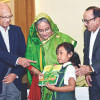
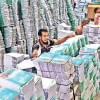
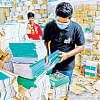
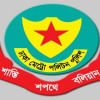
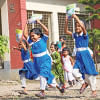

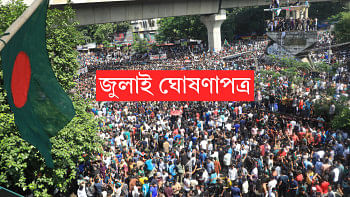
Comments